
There is no human problem which could not be solved if people would simply do as I advise. — Gore Vidal
Not that I don’t just adore telling people what to do — a not uncommon preference, as even the most cursory glance at writers’ advice websites will demonstrate — but my last couple of weeks’ worth of posts have been awfully prescriptive, haven’t they? I mean, only yesterday, I was giving fairly explicit directions on how to accost an agent in a hallway (or bar) at a writers’ conference, politely ask if s/he could spare thirty seconds, and give the shortened version of your pitch known as the elevator speech. Just like that, as if what I was recommending were as simple as ordering a turkey for Thanksgiving.
Believe me, I have no illusions about how difficult hallway pitching actually is; I’ve done it. It’s sort of like surfing: the people who are good at it make it look effortless, but in reality, it takes a whole lot of practice and a great sense of balance to master. Not to mention an eye for picking the right wave to tackle.
But hey, surf’s up. It’s literary conference season, you know.
Because I have thrown quite a bit of instruction at you in the last couple of days, I thought I might devote today to answering questions, spoken and unspoken. (And yes, that is my subtle way of asking, “Hey, does anyone have any questions before we move on to the pitch proper?” Now is the time to trot ‘em out, people. I realize that many people’s interactive web time is eaten up these days with Facebook and Twitter, but remember, the difference between a blog and a column is whether readers write in to comment and ask questions.)
Let’s begin with the unspoken, shall we?
Perhaps it was merely the growls of my restless imagination, but after yesterday’s rather intense post, I thought I heard some frustrated sighing out there. Oh, you may have been too timid to post a question about it, disgruntled gusters, but I have marvelous powers of perception.
Not to mention projection.
In any case, I sensed your unspoken irk. “But Anne,” I heard some of your psyches muttering in the dead of night, “if the elevator speech is so effective at piquing interest, why shouldn’t I just use it as my pitch in my meetings with agents and editors? Since I’m already crunched for time to write, let alone to find an agent, why do I need to invest the time in preparing more than one conference pitch?”
The short answer: so you can be flexible. As I pointed out last time, you never know when — or where — you may end up pitching.
The long answer: let’s face it, it’s not as though simply memorizing a pitch, be it 3-sentence or 2-minute, is sufficient to prepare a writer for a meeting with an agent or editor who might be interested in the book. In fact, a pretty good argument could be made for NOT memorizing either, but reading one’s pitch from a handy piece of paper, index card, etc., to avoid the glassy-eyed, zombie-like delivery that regurgitation of memorized material.
Besides, as intrepid reader Dave likes to point out each time we discuss pitching (and bless you for it, Dave), a full-scale pitch is an interactive process, not a speech declaimed to an audience who can only clap or boo at the end. If an agent or editor likes your hallway or full pitch, she’s probably going to ask some questions.
Perhaps — and this comes as a substantial shock to most first-time pitchers — even DURING your pitch. Do you really want to be caught tongue-tied and unable to speak coherently about your book?
Stick your head between your knees until the dizziness induced by that last image passes. I’ll wait.
That’s why I’ve spent the last couple of weeks trying to nudge all of you away from the all-too-common notion of the three-line pitch, practiced over and over as if they were lines in a play. If you concentrate too much on the words themselves, and the short amount of time you have to say them, it’s too easy to freeze up when an unexpected question knocks you off script.
Call me zany, but in my experience, helping people learn to talk about their work professionally and comfortably in a broad variety of contexts works far better in practice than ordering people to write, memorize, and blurt a specific number of lines of text.
Hey, I warned you at the beginning of this series that my views are a trifle iconoclastic.
The rules lawyers out there aren’t satisfied with those excellent reasons, though, are they? “But Anne,” I hear some of you protest, “I can always ADD to my pitch on the fly, but I can hardly subtract from it. So why wouldn’t I be best off just preparing the 30-second version and using it no matter where I’m called upon to pitch?”
Hmm, what was that about the advisability of people doing as I suggest?
Okay, okay, I’ll admit it: a lot of people do use the 3-sentence elevator speech as their only pitch; to be fair, it can work, just as hallway pitches work.
Just let me ask you a couple of questions: a 30-second pitch leaves quite a bit of a 10-minute appointment unused, doesn’t it? And why would you want to trade an opportunity to say MORE about your book for a format that forces you to say LESS?
I have another, more strategic reason for advising you to prepare both a short and a long pitch: not all conferences are equally open to hallway pitching. Especially, I’ve noticed, the ones that charge would-be pitchers per pitching appointment.
Not too much of a surprise, I suppose. They, too, would prefer that every writer currently wandering the earth’s crust do as they advise. And pay them for it, please.
Brace yourself, because I’m about to be subversive again: my experience has been that even at pay-for-pitch conferences, a brave writer can pretty much always buttonhole an agent or two after an agents’ forum or in the lunch line. It’s pretty difficult for conference-organizers to prevent ANY extra-appointment chance encounters between agents and the writers who came to the conference to pitch to them.
However, even at some conferences that don’t charge by the appointment, the organizers do try to discourage hallway pitching. I’ve seen many a conference brochure that featured rhetoric telling attendees that it is ALWAYS rude to pitch outside a formal appointment, for example, or that forbade attendees to switch appointments after their assigned agents announced from a dais that they’re no longer accepting a particular kind of book.
Other conferences offer only a small handful of appointment times on a first-come, first-served basis, so late registrants are left with only the options of hallway pitching or not pitching at all. It’s also not at all uncommon for agents and editors to be whisked away to private parties or hospitality suites, so that they are seldom seen in the hallways for accosting purposes.
Seldom seen sober, at any rate. Not much point in pitching to someone who thinks you’re just one of the dancing pink elephants.
Even when the rules and/or schedule do not discourage casual pitching, it can require significant bravery to place oneself at the right place at the right time. Even at fairly inclusive conferences, attendees often report feeling like comparative outcasts, unwelcome at the luncheon tables where the bigwigs hobnob. I’ve been to many a conference where the organizers and invited guests sat on one end of a banquet hall, and the paying attendees on the other.
Heck, I stopped by a conference (which shall remain nameless) a couple of years back where the visiting literati were whisked off their respective airplanes, driven immediately to a party at a local NYT bestselling author’s house for abundant merry-making, and then plied with alcohol so steadily throughout the course of the conference that the following Monday morning, one of the agents e-mailed me from New York to ask what had happened over the weekend. Rumor has it that some of the invited guests did not even show up for scheduled a.m. pitch meetings.
Which, I imagine, played some havoc with those pitchers whose assigned pitchees did not appear.
My point is, writers often pay a lot to attend these conferences, yet find themselves with relatively few pitching opportunities — and not always the ones they expected to have. Sometimes, a writer has to be pretty creative in order to snag those precious few moments for pitching, at least without coming across as obnoxious.
Which brings me to a perfectly marvelous question posted earlier in this series by insightful first-time commenter Penelope. So trenchant was it that I’ve been saving it to share with the entire class:
This is a wonderful post! I especially like the advice on what to do in the case that you’re paired with an agent who doesn’t represent your genre; which I had no idea could happen.
I do find one part of this post confusing, though. I have read on the internet (agent’s blogs, mostly) of how much agents despise being cornered and pitched to in places like elevators, hallways, bars, etc, yet you seem to be saying that this is okay. Is there a certain way to go about pitching in an elevator (for example) that would help an agent be more open to the pitch?
I find this question excellent — rather than passively accepting that what I’ve been advising is true, Penelope has thought it over, weighed advice from a variety of sources, and asked for clarification. This is a great strategy when dealing with anyone who has been immersed in the biz for a good, long while — as counter-intuitive as its ins and outs may be, once one gets used to them, their underlying logic can start to seem obvious, believe it or not.
Bear that in mind the next time you hear confusing pronouncements from the dais at a literary conference, please.
Back to the matter at hand: Penelope is quite right that there are some agents out there who hate, loathe, and detest aspiring writers asking to pitch outside scheduled appointments. Perhaps because they’ve never been in the position of a writer assigned to meet with an inappropriate match, these agents don’t believe that a polite writer would ever accost them in a hallway.
Fortunately, the relative few who feel this way — and they are few, at least amongst agents who habitually go to writers’ conferences — tend to be quite vocal about it. They post it on their websites; they announce it from the conference dais; they write articles and give interviews about it.
Thus, they have good reason to be insulted if an aspiring writer walks up to them and just starts pitching: they could hardly have made their preferences clearer. Approaching them on the fly, then, is every bit as likely to offend as picking up the phone and cold-calling an agent instead of sending a query letter. Or querying an agency that states on its website or in the standard agency guides that it is not currently accepting queries. The result of ignoring these stated preferences will be the same: instant rejection.
So here is my advice: do not, under any circumstances, attempt to pitch informally to an agent who has ever stated publicly that s/he abhors it.
How can a writer new to the biz avoid this faux pas, you ask? At the risk of repeating myself, do your homework. Performing a simple Google search on each attending agent before you head off to the conference should turn up any statements on the subject. If not, listen closely to what the various agents have to say at the agents’ forum.
Chances are, though, that you won’t turn up too many hallway-haters; it’s a common enough practice that folks who are seriously turned off by it tend to avoid the conference experience altogether. (Hey, it’s stressful for the pitch-hearers, too — listening to that many people’s hopes and dreams is mighty tiring.) After all, agents go to conferences in order to pick up clients, and it honestly is a waste of everyone’s time if they only hear pitches from the 10 writers who happen to be assigned formal appointments with them, if there are 75 writers there who write what they’re looking to represent.
Especially if 5 of those appointments turn out to be mismatches, where writers are pitching types of books that they do not represent.
If a writer’s polite about approaching, it’s usually fine. That’s a big if, though — unfortunately, there are PLENTY of rude aspiring writers up there who will simply walk up to an agent they’ve never met before and start launching into a pitch, without so much as a “Hello” or “Could you spare me thirty seconds to tell you about my book?”
Typically, when agents complain about informal pitches, that’s the kind they’re talking about, by the way, not the nice folks who approach them respectfully. You can’t really blame them for resenting the rude approach: anyone would despise being accosted right after he had just swallowed a mouthful of pasta or as she was unlocking the door to her hotel room.
Yes, it happens — but I cling firmly to the belief that none of my lovely readers would be that obnoxious.
Use your common sense, be polite at all times, and be prepared for the possibility that any given agent may have a personal pet peeve about being disturbed in some specific locale. As far as I have been able to tell in a couple of decades of going to writers’ conferences, the only UNIVERSALLY agreed-upon do-not-pitch zone is the bathroom. Other than that, whether the smoking area or the make-up mirror in the ladies’ lounge is off-limits honestly is a personal preference.
Hey, not everyone considers that part of the bathroom per se. I would err on the side of caution and avoid pitching at all between the WOMEN’S sign and the stalls, but hey, that’s me.
The trick to approaching gently lies in both timing and courtesy. If an agent is lying prone on a hallway bench with a wet towel over her face, clutching her head and moaning about a migraine, that might not be the best time to try to catch her eye, for instance. Nor is the moment just after she walks out of the room where she has been listening to pitches all day, or when she is deep in conversation with an author she hasn’t seen in 25 years.
Remember, she is under no obligation to agree to hear you out. Listening to an informal pitch is a favor, and should be treated as such.
So don’t, for instance, walk up to an agent who is laughing with her friends, tap her on the shoulder, and start talking about your book. Instead, walk up to the dais after she’s given a talk, wait politely until it’s your turn, and say something along the lines of:
“Excuse me, but I was enthralled by how you talked about your clients. I couldn’t get a pitch appointment with you, but I think you may be interested in my book. May I give you my thirty-second pitch? Or if now is not a good time, could we set up an appointment later?”
Hard to find that offensive. It clearly gives the agent the opportunity to say no, but still makes it flatteringly plain that you are taking her time seriously. Works in an elevator, too, as long as the would-be pitcher remembers that no really does mean no.
And no, in response to what some timorous souls out there just thought very loudly indeed, none of this is particularly pushy; it’s being smart about promoting your work. By preparing to be able to speak about your book in a variety of contexts, social and official both, you can be ready to take advantage of that chance meeting with the agent with whom you found it impossible to make a formal appointment.
In, say, an elevator.
The other way a hallway pitcher can avoid seeming rude is to keep the hallway pitch BRIEF. If you ask for 30 seconds of the agent’s time, do not take up more unless he asks follow-up questions.
I’m quite serious about this: don’t go overboard. This is not the appropriate time to give your full-fledged 2-minute pitch; save that for a scheduled pitch meeting or, if you’re lucky, the appointment the agent you caught in the hallway agreed to give you later in the conference.
This is where the formula we discussed yesterday will save your bacon:
MAGIC FIRST 100 WORDS + ELEVATOR SPEECH = HALLWAY PITCH.
If you follow this prescription (oh, there I go again; the book doctor is apparently in), you should not go over the promised 30 seconds. That means that you won’t have to keep checking your watch while you’re talking.
See why I’ve been so adamant about urging you to prepare an elevator speech in advance? An audience granted at the last minute is no time to wing it.
Out come the broken record and the dead horse again: by emphasizing the 3-sentence pitch to the exclusion of all others, I think the standard sources of writerly advice have left first-time pitchers ill-prepared to address those other vital issues involved in a good pitch, such as where the book will sit in Barnes & Noble, who the author thinks will read it, why the target market will find it compelling…
In short, all of the information contained in the magic first 100 words.
All that being said, if an agent has stated publicly (on an agent’s panel, for instance) that he hates informal pitches, steer clear — but don’t necessarily write that agent off as a possibility. Instead, send a query letter after the conference, beginning, “I enjoyed your talk at Conference X, and since I was not lucky enough to obtain a pitch appointment with you…”
But whatever you do, don’t swear off hallway pitching just because a few agents dislike being pitched informally. Not everything every agent says is applicable to all agents — nor do the agents who make such pronouncements necessarily expect everything they say in public on the subject to become codified as The Law Eternal.
Sometimes, a personal preference is just that: personal. By preparing yourself to talk about your work in a variety of contexts, you will be substantially less likely to be caught with nothing coherent to say when the pitching opportunity of your dreams presents itself.
Oh, I’m sensing some impatient seat-shifting out there again, amn’t I? “I get it, Anne,” some of you say, rolling your eyes, “you believe that I’ll be happier in the long run if I prepare to be able to give my pitch in a house, with a mouse, in a hat, near a rat, and anywhere else that an agent with a successful track record selling books in my category happens to be. Fine — I’m GOING to practice my elevator speech AND my pitch. But I’m hardly going to forget my own name or the title of my book. I DO have social skills — I don’t seriously need to practice introducing myself, do I?”
I’m sure that you have social skills that are the pride and joy or your mother under normal circumstances, but hear me out, please: while it may seem a tad silly to have to practice saying your own name, or to remind yourself to mention that your book is a novel (or a memoir, or a nonfiction book) most people are NERVOUS when they pitch.
I know; shocking.
Practice will help you remember to hit the important points, no matter how brief or how strange the locale of your pitching experience. Especially if you practice saying them in a number of different ways.
Yes, you did extrapolate correctly: I AM seriously suggesting that you do dry runs where you have only a minute, only thirty seconds, five minutes, etc., in order to get comfortable talking about your work. And I’m not just saying that because I once found myself stuck in the same tiny airport with a very famous agent for five hours, waiting for the same flight.
True story. Nice guy.
But surprise openings are not the only reason practicing rolling with the punches is a good idea. You’d be amazed (at least I hope you would) at how many first-time pitchers come dashing into their scheduled pitch appointments, so fixated on blurting those pre-ordained three sentences that they forget to:
(a) introduce themselves to the agent or editor, like civilized beings,
(b) mention whether the book is fiction or nonfiction,
(c) indicate whether the book has a title, or
(d) all of the above.
I find this sad: these are intelligent people, for the most part, but their too-rigid advance preparation has left them as tongue-tied and awkward as wallflowers at a junior high school dance.
We’ve all been there, right?
And don’t even get me started on the sweat-soaked silence that can ensue AFTER the 3-sentence pitcher has gasped it all out, incontinently, and has no more to say. In that dreadful lull, the agent sits there, blinking so slowly that the pitcher is tempted to take a surreptitious peek at his watch, to make sure that time actually is moving forward at a normal clip, or stick a pin in the agent, to double-check that she isn’t some sort of emotionless android with its battery pack on the fritz.
“And?” the automaton says impatiently after approximately 150 years of silence. “Are you done?”
Call me unorthodox, but I don’t think this is a desirable outcome for you.
But that doesn’t mean that you should just prepare a hallway pitch and trust your luck to be able to handle questions about it for the rest of your pitch appointment. You will be happier in that meeting if you have prepared at least the outline of a 2-minute pitch. (And yes, Virginia, we are going to talk about that next week.)
And, by the way, you should time it as you say it out loud, to make sure it can be said in under two minutes without leaving you so breathless that oxygen will have to be administered immediately afterward.
Why? Well, even more common than pitchers who dry up after 45 seconds are writers who talk on and on about their books in their pitch meetings so long that the agent or editor hasn’t time to ask follow-up questions. You really do want to keep your pitch to roughly two minutes (as opposed to your hallway pitch, which should be approximately 30 seconds), so that you can discuss your work with the well-connected, well-informed industry insider in front of you.
A pitch meeting is a conversation, after all, not a stump speech: you WANT it to start an interesting exchange, not to engender stony silence, right? Come prepared to talk about your work — and in terms that will make sense to everyone in the industry.
In a box, with a fox — or balanced in a crabapple tree with a dirt-encrusted good luck charm. (I thought I wouldn’t make you guess that time.)
Trust me, you can do this. I have faith in you.
Okay, now we’re coming up on the main course: the two-minute pitch. But that, my friends, is a subject for another day.
Thanks for the fabulous questions, Penelope and the rest of you who contacted me privately. (You’d be amazed at how often the floating voices I cite here are the result of ex parte approaches; just for the record, I vastly prefer that questions be posted as comments on the blog, so everyone may benefit from the answers.) Have a fabulous weekend, everybody, and keep up the good work!
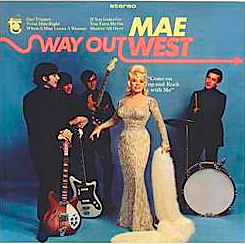
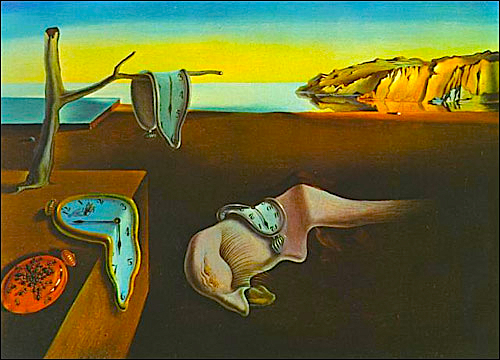






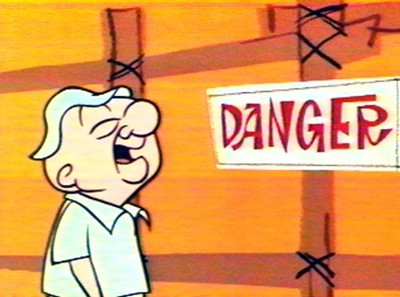
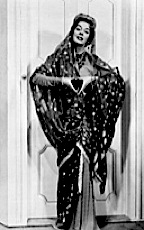






 Richard Hooker’s M*A*S*H — rejected by 21 publishing houses. {“How many Army doctors could there possibly be?” they must have scoffed. “And who else would care?”)
Richard Hooker’s M*A*S*H — rejected by 21 publishing houses. {“How many Army doctors could there possibly be?” they must have scoffed. “And who else would care?”)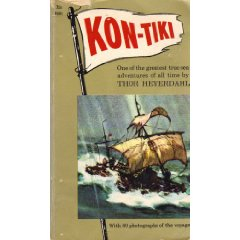 Thor Heyerdahl’s KON-TIKI — rejected by 20 publishing houses. (Yes, THAT Kon-Tiki. “This might appeal to people who sail for pleasure, but can we afford a novel for the yacht-owning niche?”)
Thor Heyerdahl’s KON-TIKI — rejected by 20 publishing houses. (Yes, THAT Kon-Tiki. “This might appeal to people who sail for pleasure, but can we afford a novel for the yacht-owning niche?”)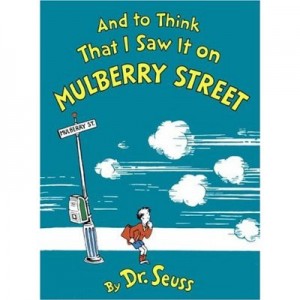 Dr. Seuss’ first book, AND TO THINK THAT I SAW IT ON MULBERRY STREET — rejected by 23 publishing houses. (“Do we really want to confuse children?”)
Dr. Seuss’ first book, AND TO THINK THAT I SAW IT ON MULBERRY STREET — rejected by 23 publishing houses. (“Do we really want to confuse children?”) Richard Bach’s JONATHAN LIVINGSTON SEAGULL — rejected by 18 publishing houses. (“The only person I have ever known who cared about seagulls was my mad great-aunt Kate, who spent her last years wandering down to the beach to offer them caviar on crackers. Next!”)
Richard Bach’s JONATHAN LIVINGSTON SEAGULL — rejected by 18 publishing houses. (“The only person I have ever known who cared about seagulls was my mad great-aunt Kate, who spent her last years wandering down to the beach to offer them caviar on crackers. Next!”)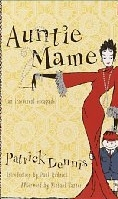 Patrick Dennis’ AUNTIE MAME — rejected by 17 publishing houses. (I have no idea what they were thinking here; perhaps that it was really a memoir?)
Patrick Dennis’ AUNTIE MAME — rejected by 17 publishing houses. (I have no idea what they were thinking here; perhaps that it was really a memoir?)


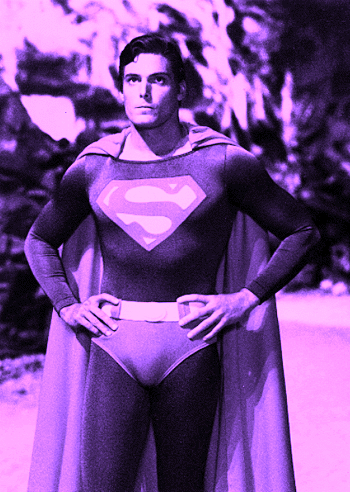






 Paula Neves has been writing across genres since she was a teen, but has always loved poetry, to which she keeps returning. Her poetry has appeared in
Paula Neves has been writing across genres since she was a teen, but has always loved poetry, to which she keeps returning. Her poetry has appeared in 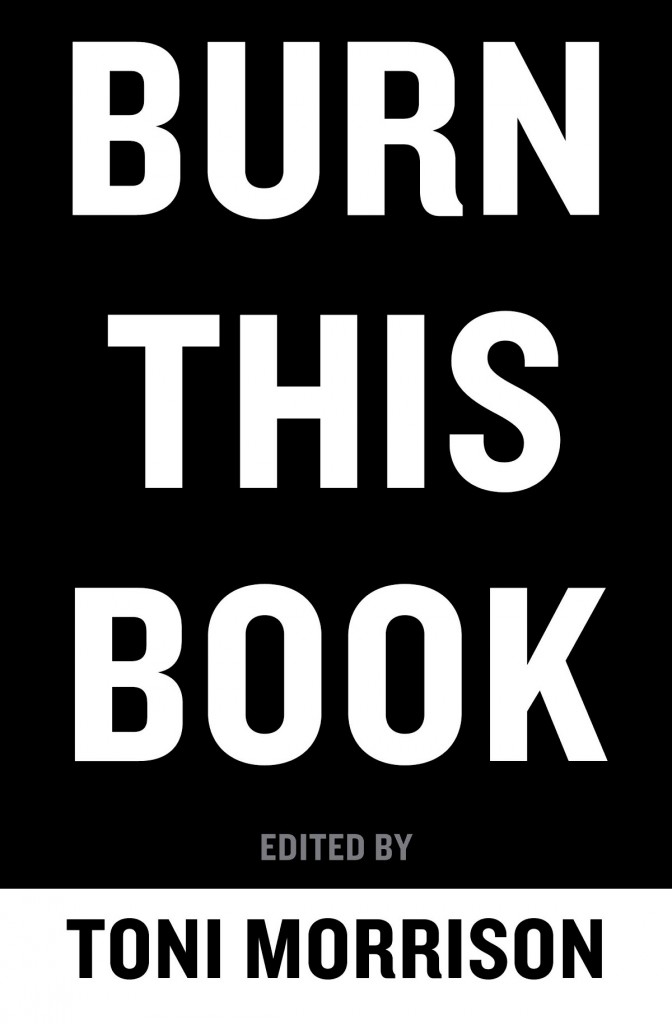













 PS: don’t forget to check in this weekend for the promised special treat!
PS: don’t forget to check in this weekend for the promised special treat!